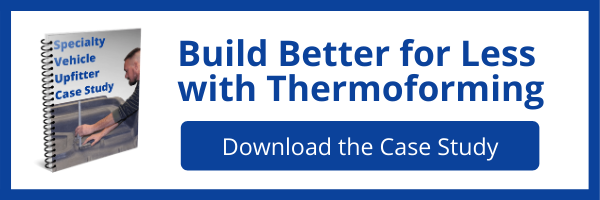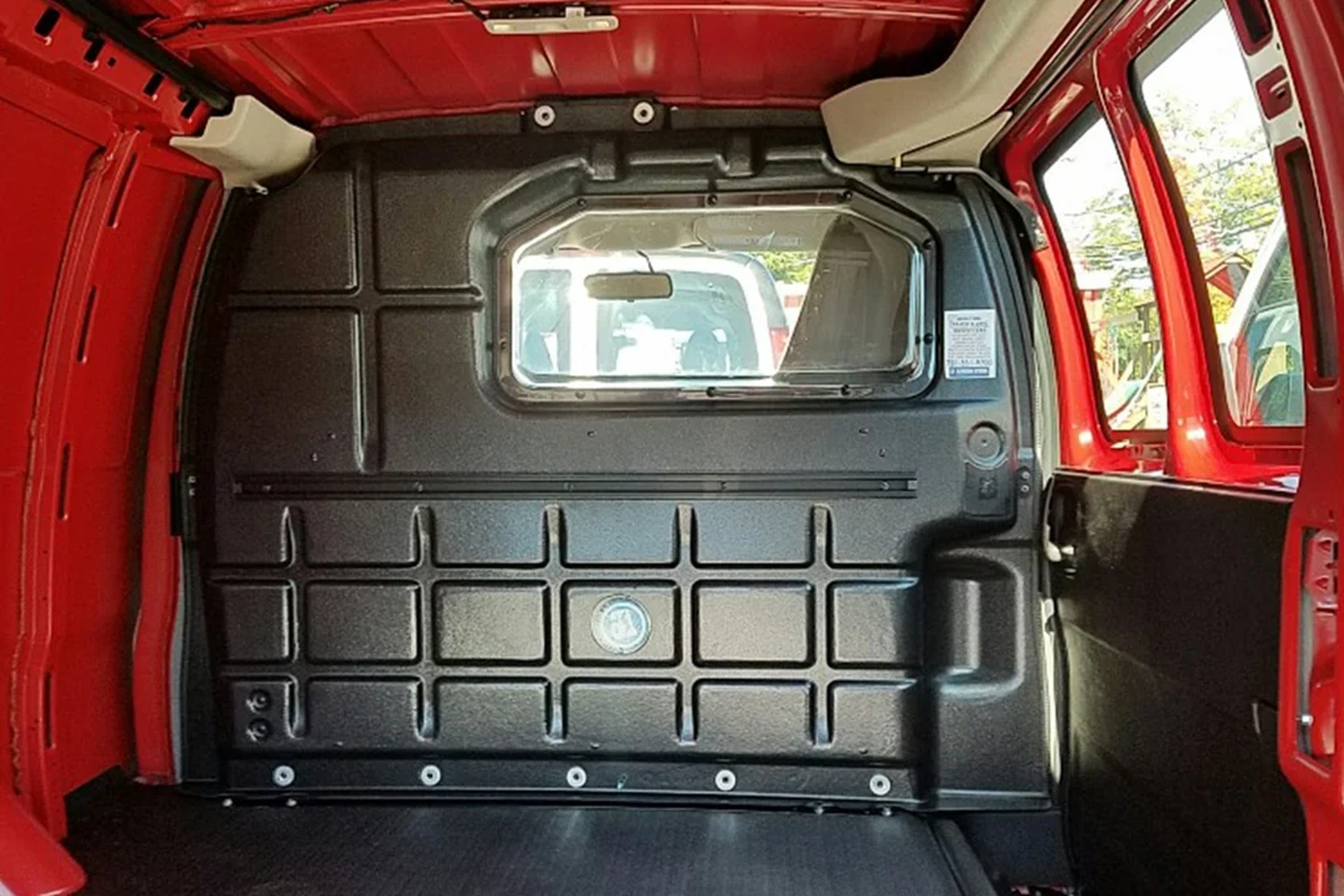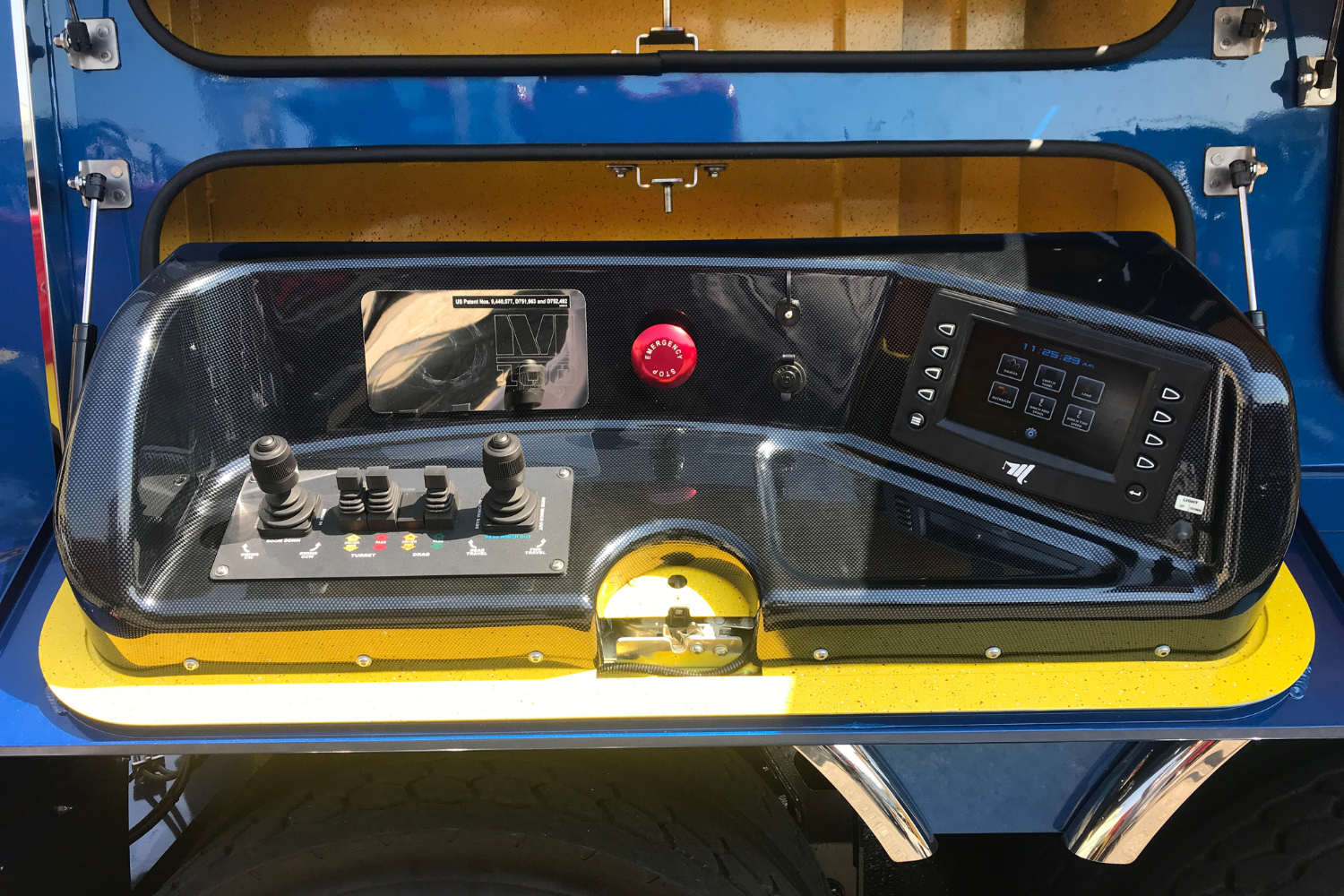How Thermoforming Large Parts vs. Individually Made Parts Saves Weight, Time, and Money
Why Engineers Choose Large Thermoformed Parts Over Metal Components
Your team faces mounting pressure. Battery-powered vehicles need more range. Equipment manufacturers demand lighter assemblies without compromising durability. Metal stamping quotes arrive with six-figure tooling costs and 16-week lead times. Meanwhile, your production volumes sit in the hundreds, not thousands, making traditional manufacturing economics unworkable.
Large thermoformed plastic parts solve this exact problem. They deliver the weight reduction your electric vehicles require, the production flexibility your engineering timeline demands, and the cost structure your budget can support.
How Much Weight Can You Actually Save?
Weight reduction isn't theoretical when you're designing battery-powered equipment. Every pound matters. The numbers from actual conversions tell the story better than any sales pitch.
A heavy equipment manufacturer converted metal belt guards to thermoformed ABS. The original steel guards weighed 718 pounds and required a forklift for daily belt inspections. The thermoformed replacement? 38 pounds. One person could now handle what previously took equipment and two workers.
The math extends beyond individual parts. Commonly used plastics like polypropylene, ABS, and polycarbonate run approximately two times lighter than aluminum and up to three times lighter than stainless steel. For municipal transportation, an 800-pound weight reduction translates to 2 to 3% fuel savings across the vehicle's service life.
This weight advantage cascades through your entire operation. Lighter parts cost less to ship. Installation takes less time. Your assembly workers move faster. For battery-powered vehicles and equipment, reduced weight means extended operation time and greater range between charges.
What Makes Thermoforming Economics Work for Large Parts?
Traditional metal stamping and injection molding force you into a brutal choice: accept massive upfront tooling costs or abandon the project. Thermoforming changes the equation entirely for large components.
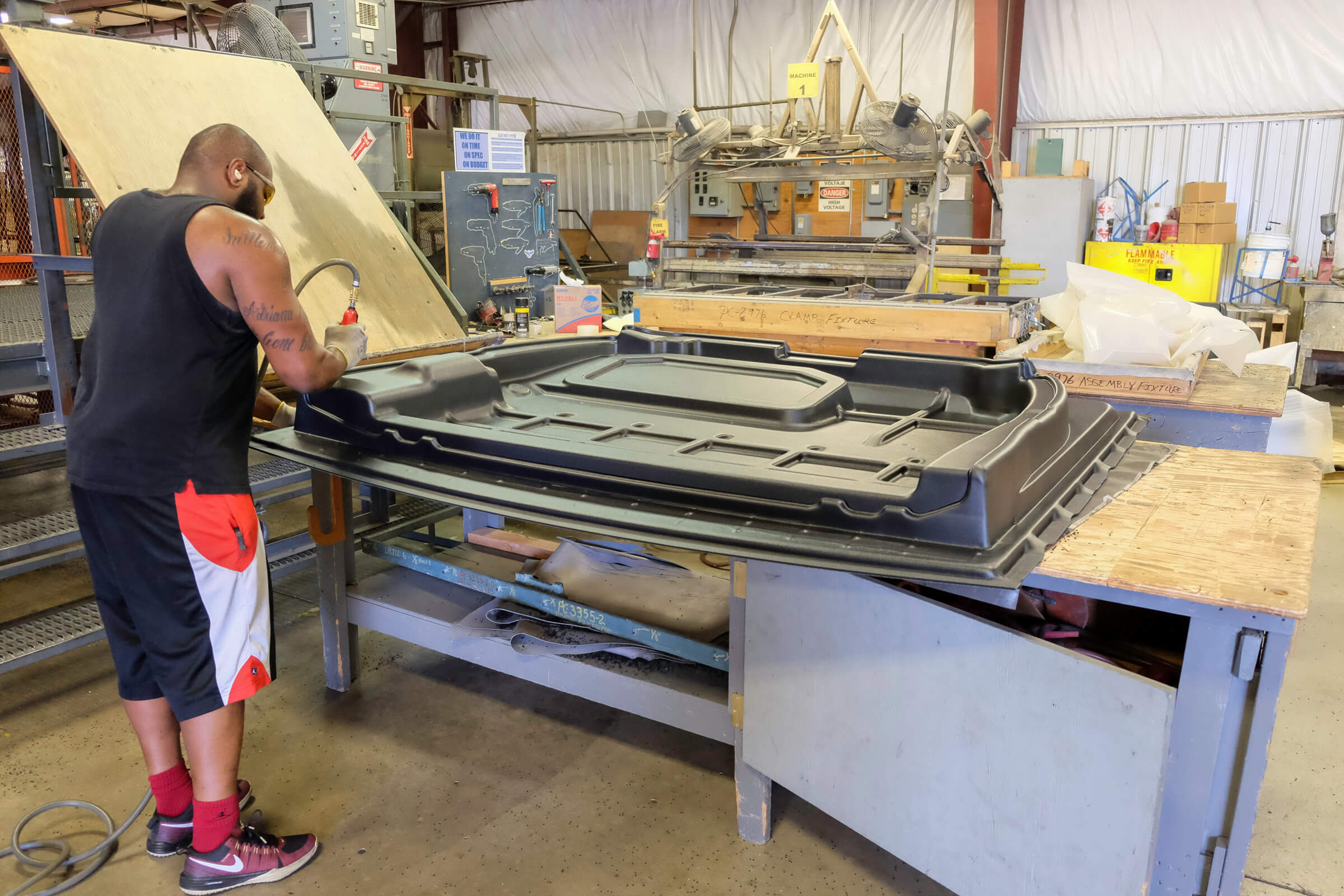
Typical thermoforming tooling costs run $10,000 to $50,000. Compare that to $150,000 or more for injection molding or metal stamping dies. The difference comes from tooling structure. Thermoforming often requires only a single-sided tool rather than matched male and female dies, cutting both cost and design time.
For parts larger than two feet square, the economics become even more favorable. Once you exceed what standard injection molding equipment can handle, your manufacturing options narrow to thermoforming, fiberglass, or metal fabrication. Thermoforming delivers faster turnaround and lower tooling investment than either alternative.
The process scales efficiently to your actual production needs. If you're running 10s, 100s, or 1,000s of parts per month rather than tens of thousands, thermoforming economics work where other processes don't. Setup and changeover costs stay manageable. You're not forced to overproduce to justify tooling investment.
Can Plastic Match Metal Performance in Large Components?
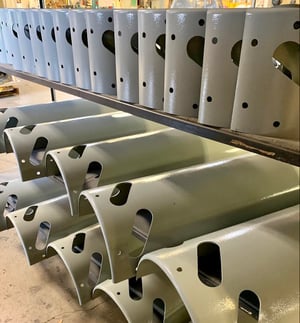 The strength question dominates early conversations. Engineers trained on metal parts naturally question whether plastic can handle the load. The answer depends on understanding strength-to-weight ratios rather than absolute strength values.
The strength question dominates early conversations. Engineers trained on metal parts naturally question whether plastic can handle the load. The answer depends on understanding strength-to-weight ratios rather than absolute strength values.
Most parts aren't designed for maximum strength. They're engineered to meet specific strength-to-weight or stiffness-to-weight ratios for the application. Because plastics weigh less than metals, thermoformed parts often compete directly with metal by providing similar performance at reduced weight.
Design flexibility gives you tools metal fabrication can't match. Thermoforming allows engineers to vary wall thickness across the part, adding material only where structural requirements demand it. Critical load-bearing sections get thicker gauge material. Areas with minimal stress stay thin to save weight. This optimization is expensive or impossible with stamped metal.
Material selection expands your options further. Glass or carbon fiber reinforcement creates specialized thermoplastic matrices with enhanced strength and stiffness. Twenty percent glass-filled acetal weighs about 50% more than standard ABS or polycarbonate but still runs nearly two times lighter than steel while delivering comparable strength characteristics.
Real-world testing proves the concept. When a specialty vehicle manufacturer tested ABS wall panels for cargo impact resistance, the results surprised their engineering team. The thermoformed panels showed virtually no indentation from projectile impacts that would dent metal. Operators reported additional benefits: improved thermal insulation kept cabs comfortable longer, and noise transmission dropped more than 3 decibels compared to metal panels.
Which Large Parts Work Best for Thermoforming?
Not every component belongs in plastic. Structural elements integral to vehicle or equipment integrity typically stay metal. But a wide range of large parts benefit from conversion to thermoformed components, particularly in battery-powered and specialty vehicles where weight drives performance.
Exterior body components like fenders, side panels, bumper covers, and hoods make excellent candidates. These parts need durability and impact resistance but don't carry primary structural loads. Interior applications include instrument panels, door panels, consoles, and headliners. Protective components like splash guards, wiper motor covers, and equipment guards convert readily.
The common thread: large parts in low to medium production volumes where metal stamping costs become prohibitive. Parts that benefit from complex curves or styling details that are difficult to achieve in metal. Components where weight reduction delivers measurable performance gains or cost savings downstream.
Thermoforming handles sizes from 6 inches square up to 6 feet by 10 feet. Heavy gauge forming (0.060 to 0.50 inch thick) provides the rigidity large parts require while maintaining the weight advantage over metal alternatives.
How Fast Can You Get from Design to Production Parts?
Speed to market often matters more than perfect optimization. Your product launch date is fixed. Trade shows won't reschedule. Production lines need parts on specific dates or assembly stops.
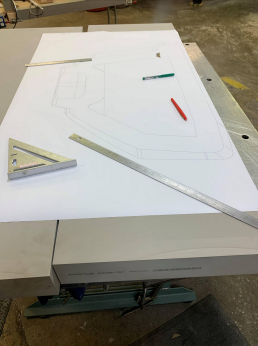 Thermoforming prototype tooling can be ready in weeks, not months. Wood tooling produces initial test parts for design validation in days to weeks. These tools make roughly a dozen parts, enough for fit, form, and function testing without major capital investment.
Thermoforming prototype tooling can be ready in weeks, not months. Wood tooling produces initial test parts for design validation in days to weeks. These tools make roughly a dozen parts, enough for fit, form, and function testing without major capital investment.
For larger prototype runs, machinable tooling boards provide more durability. These materials support a few thousand parts while remaining quick and economical to produce. When the belt guard manufacturer needed parts for a trade show debut, PCI delivered first article prototypes three weeks before the event, giving the team time to test, validate, and prepare for production.
Tooling modifications happen quickly throughout development. Changes that would require starting over with metal dies often take days with thermoforming tools. This flexibility lets you refine designs without blowing budgets or missing deadlines.
Production tooling in cast or billet machined aluminum supports runs exceeding 5,000 parts and provides tighter temperature control for demanding materials. But even aluminum thermoforming tools cost less and arrive faster than comparable metal stamping dies.
What Material Options Handle Your Application Requirements?
The plastic sheets used in thermoforming come in dozens of formulations, each engineered for specific performance requirements. Your choice depends on the actual conditions the part will face.
ABS delivers high impact strength and a good cost-to-performance ratio compared to painted metal, fiberglass, or aluminum. It accepts custom color matching and processes easily. HDPE and HMWPE provide excellent chemical resistance. Polycarbonate offers superior impact resistance and heat deflection. TPO formulations deliver outdoor durability and UV resistance.
Specialized compounds address specific challenges. MVSS 302 rated materials meet automotive flammability standards. Low smoke and low toxicity formulations suit mass transit and other applications where fire safety drives material selection. Flame retardant options with high heat deflection temperatures work for electrical housings and equipment enclosures.
Co-extruded materials layer different polymers to combine properties. You might pair UV-resistant cap layers with a high-strength core, or add color on one surface while maintaining recycled content in the substrate. This flexibility lets you optimize for both performance and cost.
Material selection connects directly to your real operating environment. Chemical exposure? Temperature extremes? Impact requirements? UV degradation? Each factor narrows the material choices toward options that will perform long-term rather than fail after six months in service.
How Does Assembly and Finishing Affect Your Production Timeline?
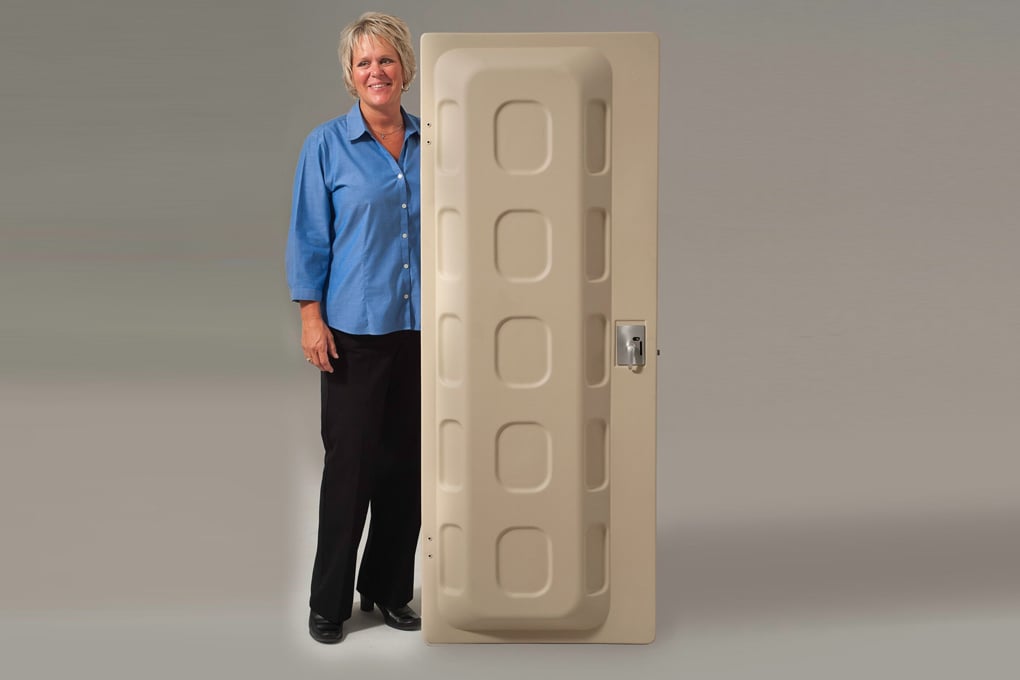
Parts don't ship from the thermoforming press. They need trimming, assembly, and often additional finishing. These secondary operations either streamline your production or create bottlenecks, depending on how you structure them.
CNC trimming delivers consistent edges and tight tolerances. Fixture trimming works for simpler geometries where cost matters more than precision. The choice affects your assembly process downstream.
Many projects benefit from receiving sub-assemblies rather than individual components. Epoxy bonding, sonic welding, and mechanical fasteners let you combine multiple elements into a single installed unit. Steel or nylon fasteners, hinge incorporation, and screen installation can all happen before parts leave the thermoforming facility.
This consolidation reduces your assembly time and inventory complexity. Instead of managing six separate components through your production system, you handle one assembly. Installation takes minutes instead of hours. Quality control checks happen once instead of six times.
Molded-in color eliminates painting operations entirely. Logos, graphics, and textures can be incorporated during forming at minimal additional cost. These integrated features cut production steps while improving part consistency.
What Production Volumes Make Thermoforming Your Best Option?
Every manufacturing process has a sweet spot where economics align with capability. Thermoforming excels when your volumes sit between prototype quantities and mass production runs that justify major capital investment.
If you're producing tens to thousands of parts per month, thermoforming often beats alternatives on total cost. The lower tooling investment pays back quickly. Setup costs stay manageable. You're not forced to build six months of inventory to achieve acceptable piece prices.
For higher volumes, the decision becomes more nuanced. Metal stamping might win on piece price at 10,000+ parts per month. But factor in the complete picture: tooling costs, lead times, design change costs, and weight-related savings in shipping and installation. Many manufacturers find thermoforming remains competitive even at higher volumes for large parts.
The flexibility matters beyond pure economics. Production schedules change. Customer requirements shift. New regulations appear. Thermoforming adapts without requiring massive tooling reinvestment. You can modify designs, adjust colors, or incorporate new features without starting from scratch.
Why Choose Plastic Components for Large Thermoformed Parts?
Since 1972, Plastic Components has specialized in medium and heavy gauge large vacuum formed parts. We consolidate tooling, engineering, and manufacturing under one roof, eliminating coordination delays and communication gaps that slow multi-vendor projects.
Our forming capability runs up to 6 feet by 10 feet with both fixture and CNC trimming options. This size range handles the large components that drive your weight reduction and cost savings goals.
Materials expertise spans ABS, HDPE, HMWPE, Polycarbonate, Polystyrene, PVC, TPO, TPR, and Nylon, including specialized compounds for demanding applications. Short lead time tooling options keep your project moving when schedules tighten.
Assembly services include epoxy bonding, sonic welding, riveting, steel and nylon fasteners, hinge incorporation, and screen installation. We can deliver complete sub-assemblies ready for your production line rather than loose components requiring additional handling.
We'll deliver your thermoformed parts on time, to specification, and on budget.

